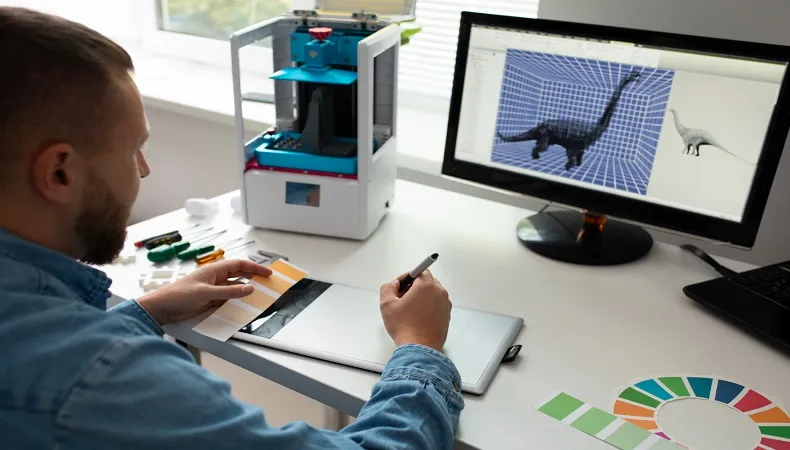In the digital media space, what we see is that GFX, which stands for graphics, has become a base term that includes elements like visual effects in video production, to digital art and branding design. As a content creator, gamer, marketer, or graphic designer, what you stand to gain is that once you understand what GFX is and how it is used, you will, in turn, see an improvement in the quality and impact of your visual content.
In this piece, we will look at what exactly GFX is primarily used for will also present you with practical tips on how to produce professional-grade visual content that stands out in today’s competitive digital world.
What Is GFX?
GFX is an acronym for graphics or graphic effects. This is a term we use for any sort of visual media that we put out there to better enhance content with the help of imagery, motion, and digital design. This term is very much a part of vocabulary in many industries, which include:
Gaming: This refers to the visual quality and design style (e.g., high-end GFX settings).
Video Production: Includes overlays, transitions, animations, and motion graphics that bring videos to life.
Branding and Marketing: That includes also what is put out there for the purpose of attracting and reaching out to audiences.
Design Communities: GFX is a very common term used by designers. They put it out there on platforms like Discord, Behance, and YouTube.
Key Elements of High-Quality GFX
Visual Consistency
A consistent design approach — color palettes, typefaces, and layout, which in turn improves brand recognition and presents graphics in a very polished way.
High Resolution and Scalability
Always work in high resolution and use vector formats (like SVG or AI files) for assets that will scale across different devices or print sizes.
Effective Use of Contrast and Composition
A proper mix of text and graphics presents the message clearly and also in a very appealing way.
Dynamic Movement and Animation (for Video GFX).
Motion design turns your images into dynamic stories. This is the smooth transitions and timing that keep the viewer’s attention.
Optimization for Platforms
Tailor your GFX for each platform — social media, websites, or video — to improve size, load time, and audience engagement.
Tools and Software for Creating GFX
1. Here is what professionals use for high-quality graphics:.
2. Adobe Photoshop is also used for your image editing and compositing needs.
3. Adobe After Effects is the gold standard in motion graphics and visual effects.
4. Blender is a free and open source tool for 3D modeling and animation.
5. Canva and Figma — great for web-based design collaboration and quick content creation.
6. Davinci Resolve 20 Pro — great for video graphics and post production.
Best creations in graphics :
Learn the Principles of design and study the basics of color theory, composition, and typography.
Keeps it Simple: Steer clear of clutter. Simplicity improves impact.
Use Templates: The templates can help in speeding up the process is also be sure to customize for your brand.
Stay Updated: Design trends related to digital transformation change very quickly.
Follow the graphic artists and platforms for inspiration.
Optimize File Formats: Use optimized image formats like WebP and compressed PNGs for better load times.
Conclusion.
In the present age of visual dominance, graphics play a key role in communication, branding, and entertainment. Top quality graphics not only better present our content but also put your audience at the center and support brand integrity. To master basic tools, live by design principles, and optimize for performance, you can step your GFX up and create visuals that really connect with people.
Stay with Fox4kc for more information.



